How to mount your TV to a wall in a way that's smart and safe
Find out how to mount your TV to a wall with our expert tips and tricks
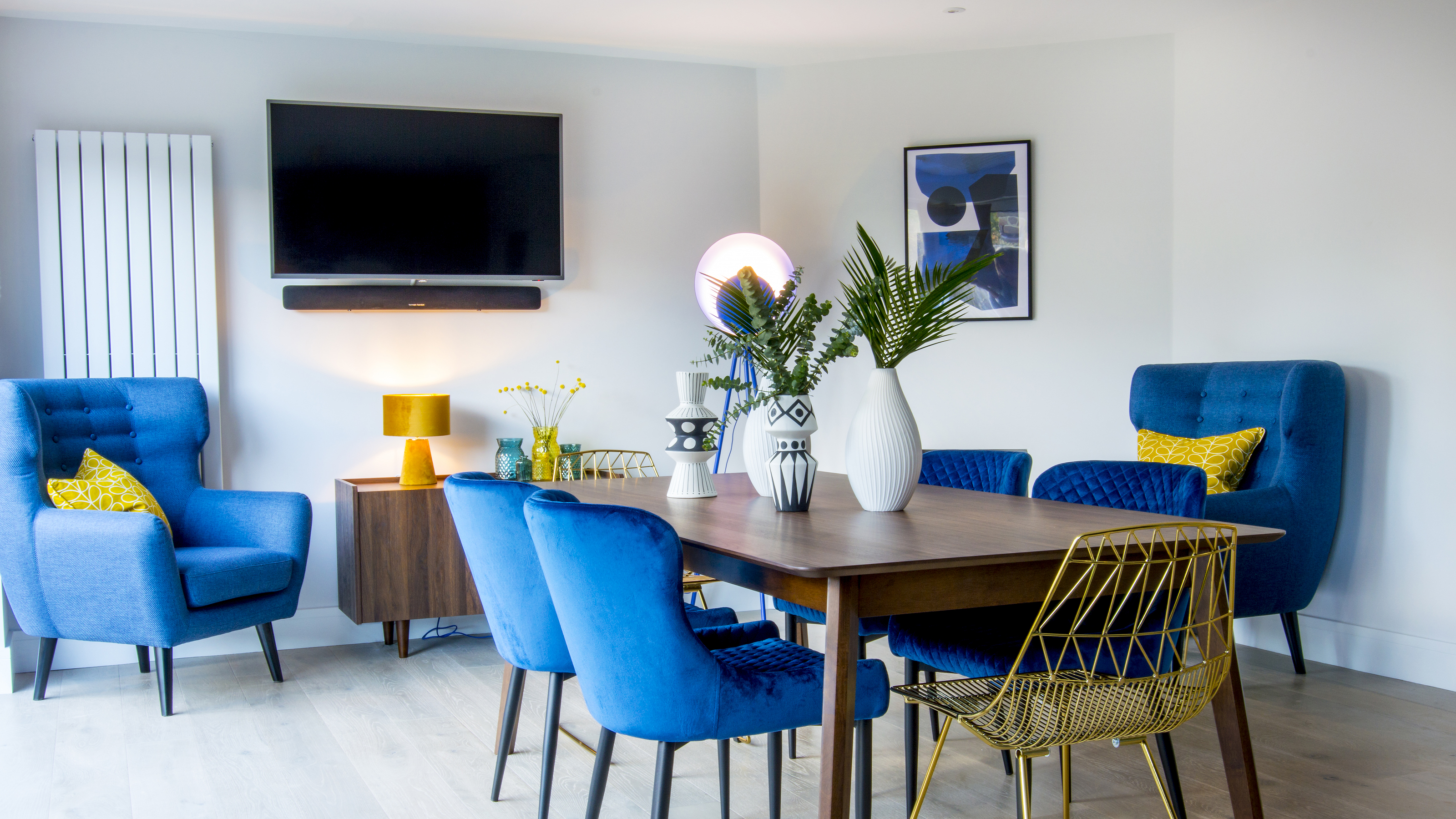
Knowing how to mount your TV to a wall and what's involved is useful intel when it comes to decorating your home. Getting to grips with the design details right down to the raw basics - however technical they may first appear - is what makes for a successful revamp, after all.
And if you know exactly what's involved when designing the rooms in your home and have already considered your living room TV ideas and how to overcome any technical problems, it may also leave you feeling less like you need to book a holiday in the Maldives halfway through the decorating process. Or perhaps that's just us?
Once you've decided where to position your TV, you're definitely more likely to find the pieces of the design jigsaw come together smoothly anyhow. To find out how to mount your TV onto a wall and what's involved, we spoke to Owen Maddock, technology expert at Cinemaworks for some step-by-step tips.
How to mount your TV to a wall
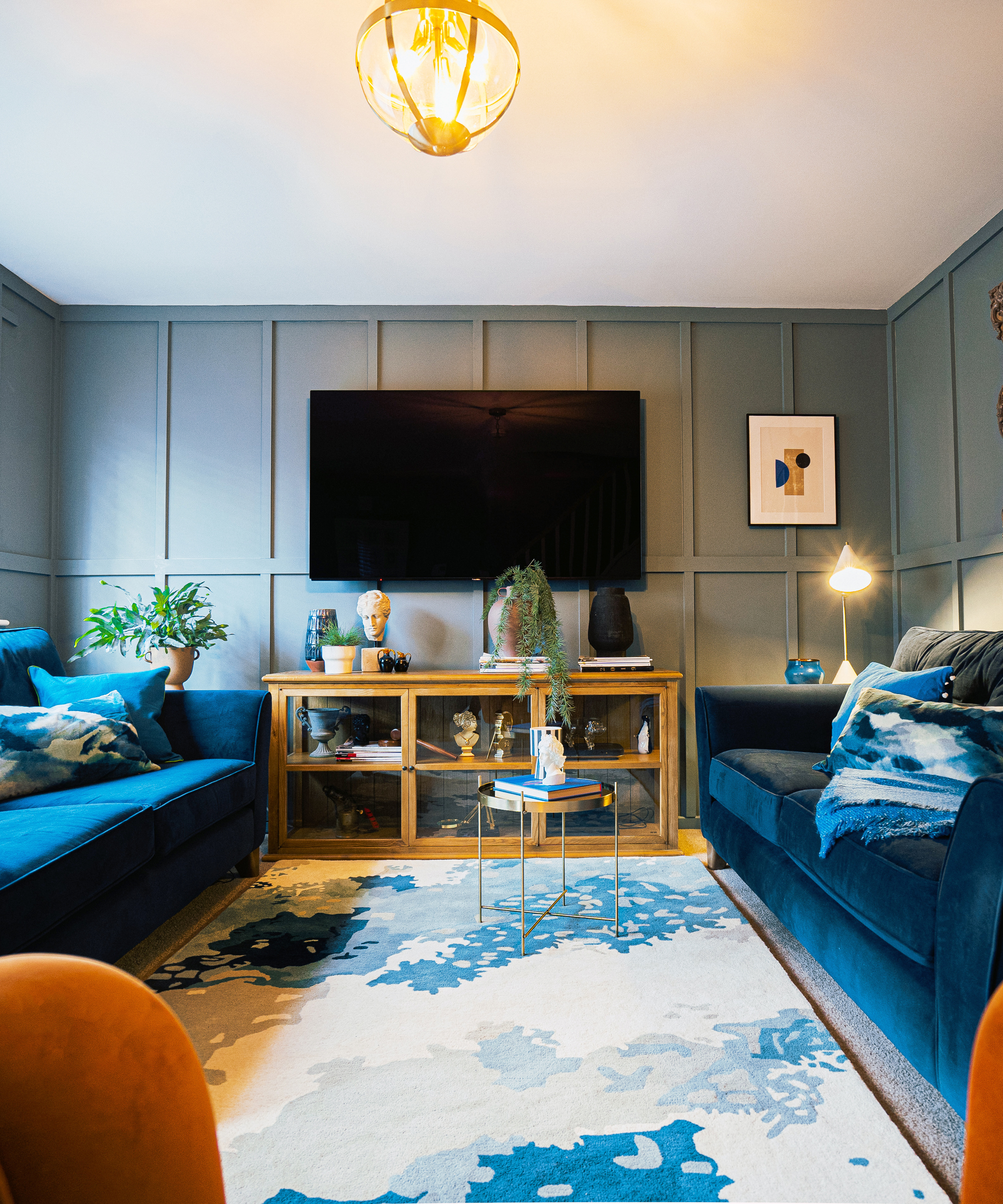
Nick Ross Design
1. Plan for positioning your TV at the optimum height
You may, like us, find yourself swooning over amazing living room design with a TV mounted over the fireplace, but have you considered how comfortable you would feel watching TV in that position? If the TV is placed too high, it leads to unnecessary strain on your neck.
'It’s common in the UK for wall-mounted TVs to be far too high, and it’s not comfortable to watch a film like that,’ says Owen.
'When we’re driving or working at computers, we put our eyes at about screen centre, so we can sit comfortably and see what’s going on. TV is exactly the same. The ideal is to have the screen centre at eye level, or at most, 5 degrees up from there.’

Mount by Future Automation shows TV mounted at the optimum height
2. Hide the cables, but make them aceessible
Remember that tech is constantly changing, so as well as kitting out your TV with all the wires and accessories it needs now, remember to future-proof your set up too.
‘We always try to sink an ‘open route’ into walls wherever we can - a standard 44mm wastepipe works well for this,’ says Owen. ‘HDMI and USB have changed a lot over the years and these changes will keep coming. So you will want to put new cables in later, and you definitely don’t want them getting brick dust in (or snagging on the woodwork in a stud wall) so we’ll use a fairly wide, round pipe, set into the wall between where the TV and the ‘boxes’ are.
‘That lets you run a new cable in later - either because the original one is broken, or the cable standard has changed. The worst thing you can do with delicate signal cables is plaster them in, but we still see this done fairly often.'
It’s also important to ensure you have a good internet feed. ‘The ideal is to run an Ethernet cable straight to the TV, that will always work and you never have to change the password,’ says Owen. ‘If you can’t, then make sure the WiFi is as strong and fast as possible. Don’t forget about the Freeview aerial or satellite feeds - even if you only use them when the internet is down.’
3. Choose your TV mount
For screens above around 50 inches, Owen advises that you use a full-motion mount that moves forward and back easily and always stays level. ‘That makes any future changes really straightforward - and crucially it only takes one of you to make the changes,’ says Owen. ‘If the TV has to lift off the wall every time you want to change something that’s a proper pain.’
You can find a range of companies online selling brackets for your TV, and you may need to go specialist if you've opted for one of the best 85 inch TVs.
Future Automation is a great port of call for a wide selection of TV mounts. Other good makes are Sanus and Vogels.
Owen is often asked about tilt brackets, but advises homeowners to take another route. ‘I think these are for pubs and have no place in someone’s home,’ he says. ‘If you get the screen position right to start with, there’s no need to tilt it forward.’
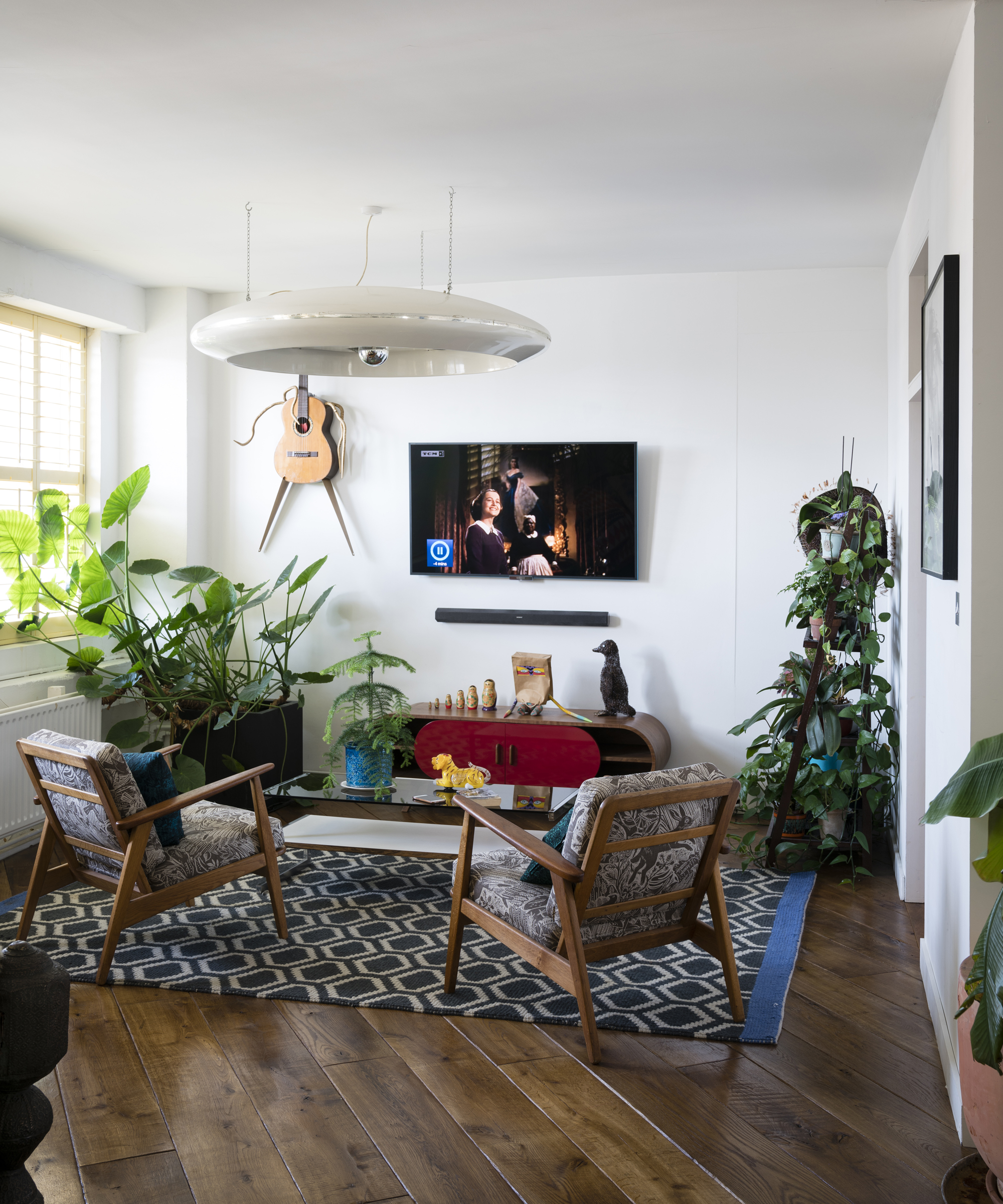
4. Consider the wires
It’s important to look at back of the TV and at the mount you have, and work out exactly where your cables need to come out. In joinery it’s easier as you can make the holes later on.
‘We often recess a ‘box’ area, but inside the outer edges of the TV, which helps us hide all the cabling and any electronics, and lets the TV sit dead flush against the wall,' says Owen.
5. Consider recessing your TV
Putting the whole TV in a recess is one of the most popular ways to hide your TV too, but it’s important to consider the logistics such as adequate ventilation.
‘If you choose to have a TV mounted into a recess at a certain height, this can limit you if you want to upgrade to a larger size in future - and that’s pretty common,’ says Owen.
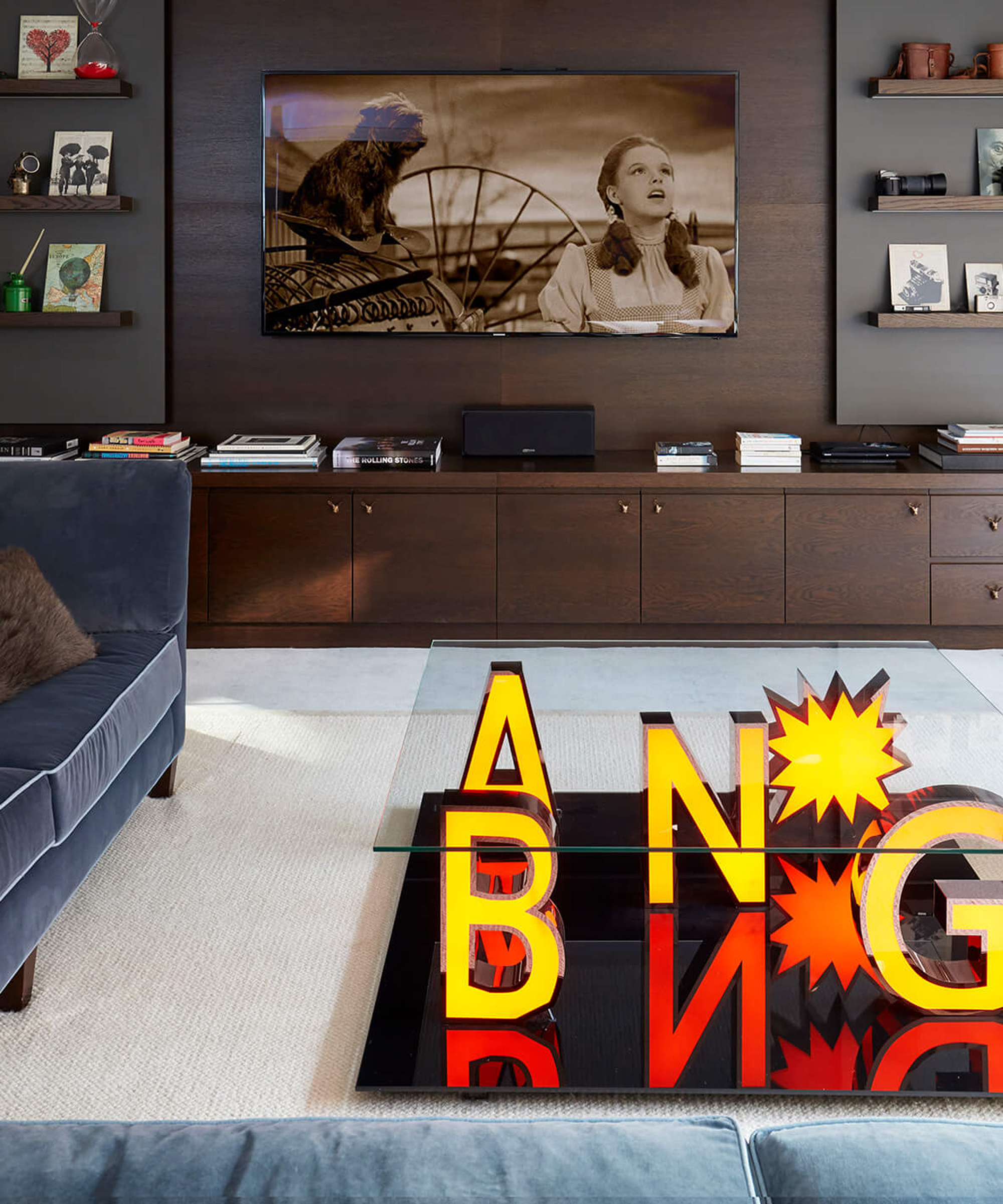
Naomi Astley Clarke design
6. Reinforce the TV mounting area
When mounting to joinery – such as a large wall media unit or bookcase - you will need to reinforce the back of the cabinet. Alternatively, you can remove a section of the cabinet and mount directly to the wall.
A ‘handyman’ might be cheaper than a specialist installer, but bear in mind you’ll have to decide on the fine details for them. To find an expert in your area who can professionally mount your TV to a wall, contact CEDIA - the global association for the home technology industry.
7. Start your installation
Once you’ve considered all the above and made a plan, the installation phase ought to be straightforward. ‘Make sure your fixings are strong enough and correct for the wall type you are fixing to,’ says Owen.
‘We’ll use coach screws and a socket wrench in brick and blockwork, or plenty of screws into wooden studs. I would try and avoid fixing to plasterboard, if that’s all you’ve got that’s a cue to call in professionals.'
'I also like to allow a little ‘play’ in the brackets, so I can make fine adjustments later - for example - using metal repair washers between the fixings and the wall mount.'
8. Perfect the level
Make sure (and then check again) that everything is level. In an older house you might need to ’split the difference’ e.g. your floors and ceilings may not be level, or even parallel with each other. Budget some time to get this exactly right.
‘If you’re using a pull-out bracket - and you should be - it’s quite easy to manage the cables,' says Owen. 'You can tie-wrap them to the bracket arm - do this in the ‘out’ position! Move it forward and back several times to fix any snags and fouling, then the set up should last you well for years.'
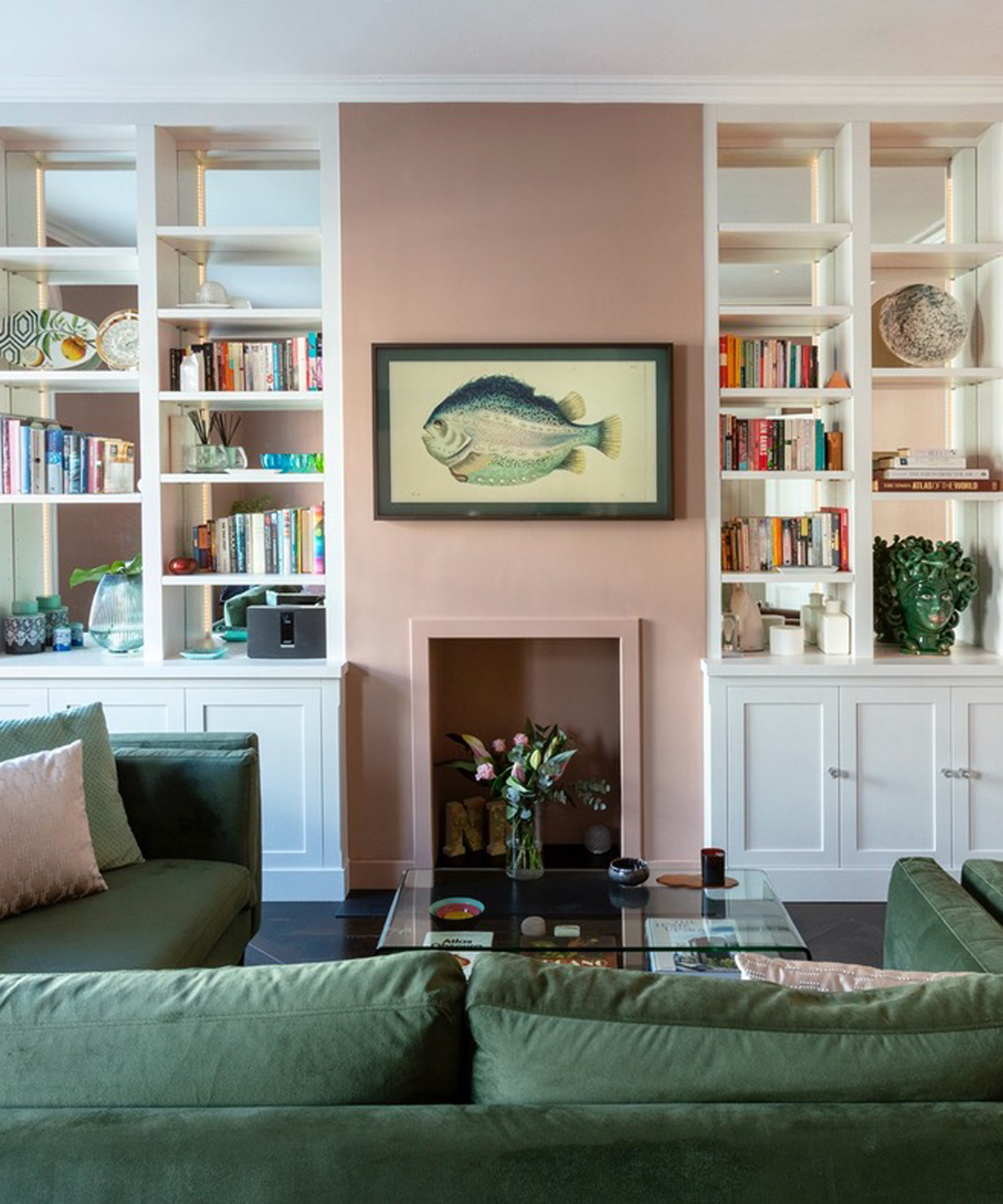
Samsung Frame TV
How do you mount a TV by yourself?
Always seek help when mounting a TV onto a wall, especially if its a large screen. Once you have chosen your TV, you need to check which TV brackets it is compatible with - not all brackets will be suitable. Once you’ve chosen where to position your TV, you’ll need the right tools for the job and be an experienced DIY-er to carry out the wall mounting successfully.
You can follow our step-by-step guide on how to mount your TV to a wall here to gain insight, but we advise calling upon the help of a professional before you start your project to check the logistics.
Which TV can I mount onto my wall?
While you need to check which TV bracket is suitable for your TV, there are a number of TV designs that make the whole process a little easier. ‘Samsung’s The Frame TV mimics a piece of art and you can customise the frame colour to fit with your room’s scheme,’ says Katrina Mills, TV & AV buyer at John Lewis & Partners.
‘Then there is the gallery style wall mount such as the LG G1, where the TV is fixed almost flush to the wall. You can also buy the Samsung Sero, which is freestanding and has a rotating screen, which means you can watch social media content in portrait mode.’
Be The First To Know
The Livingetc newsletters are your inside source for what’s shaping interiors now - and what’s next. Discover trend forecasts, smart style ideas, and curated shopping inspiration that brings design to life. Subscribe today and stay ahead of the curve.
One of the UK's most respected tech and smart homes writers, Emily Peck also covers everything from interiors style to decorating trends. She is a contributor to Wired UK, and has also had a column in House Beautiful. She has written for publications such as Grand Designs, Stylist, Shortlist, Woman&Home, BBC, Ideal Home and House & Garden. She was once the Features Editor of Ideal Home.
-
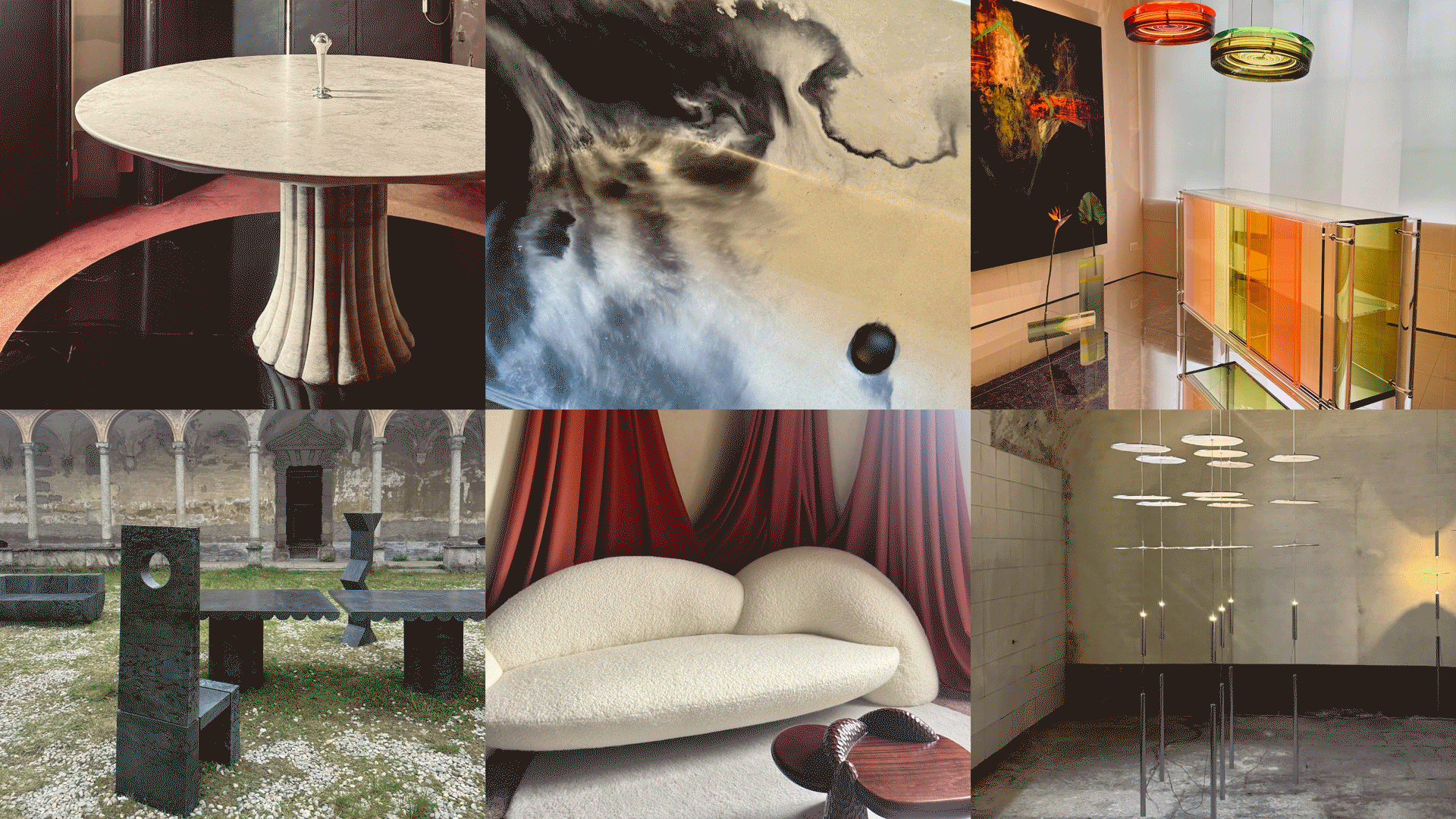 Straight from Salone: Five Emerging Trends I Found That'll Shape Interiors For the Year Ahead
Straight from Salone: Five Emerging Trends I Found That'll Shape Interiors For the Year AheadFrom reflective silver to fluidity, here's my perspective on the key themes and new moods coming through from Milan Design Week
By Sarah Spiteri Published
-
 9 Bathroom Storage Mistakes You're Probably Making That Make Using This Space Much Harder — And What to Do Instead
9 Bathroom Storage Mistakes You're Probably Making That Make Using This Space Much Harder — And What to Do InsteadDiscover which mistakes are to blame for your overcrowded and cluttered bathroom
By Seraphina Kyprios Published
-
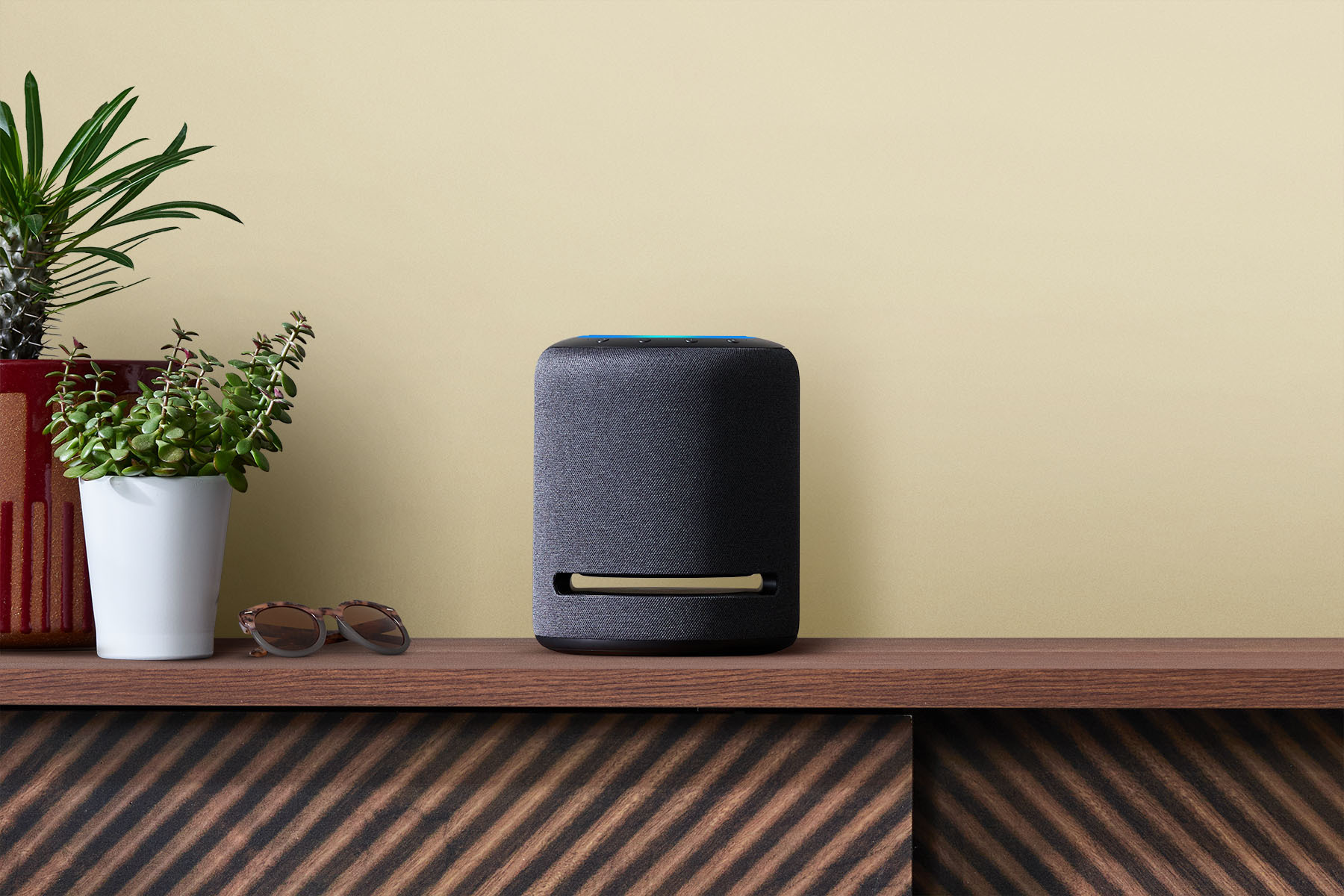 Here are All the Ways Your Alexa Device Can Help With Your Houseplant Care
Here are All the Ways Your Alexa Device Can Help With Your Houseplant CareThanks to some clever new features, your Alexa smart speaker can now offer a bespoke botany service to keep your indoor garden looking its best
By Lilith Hudson Last updated
-
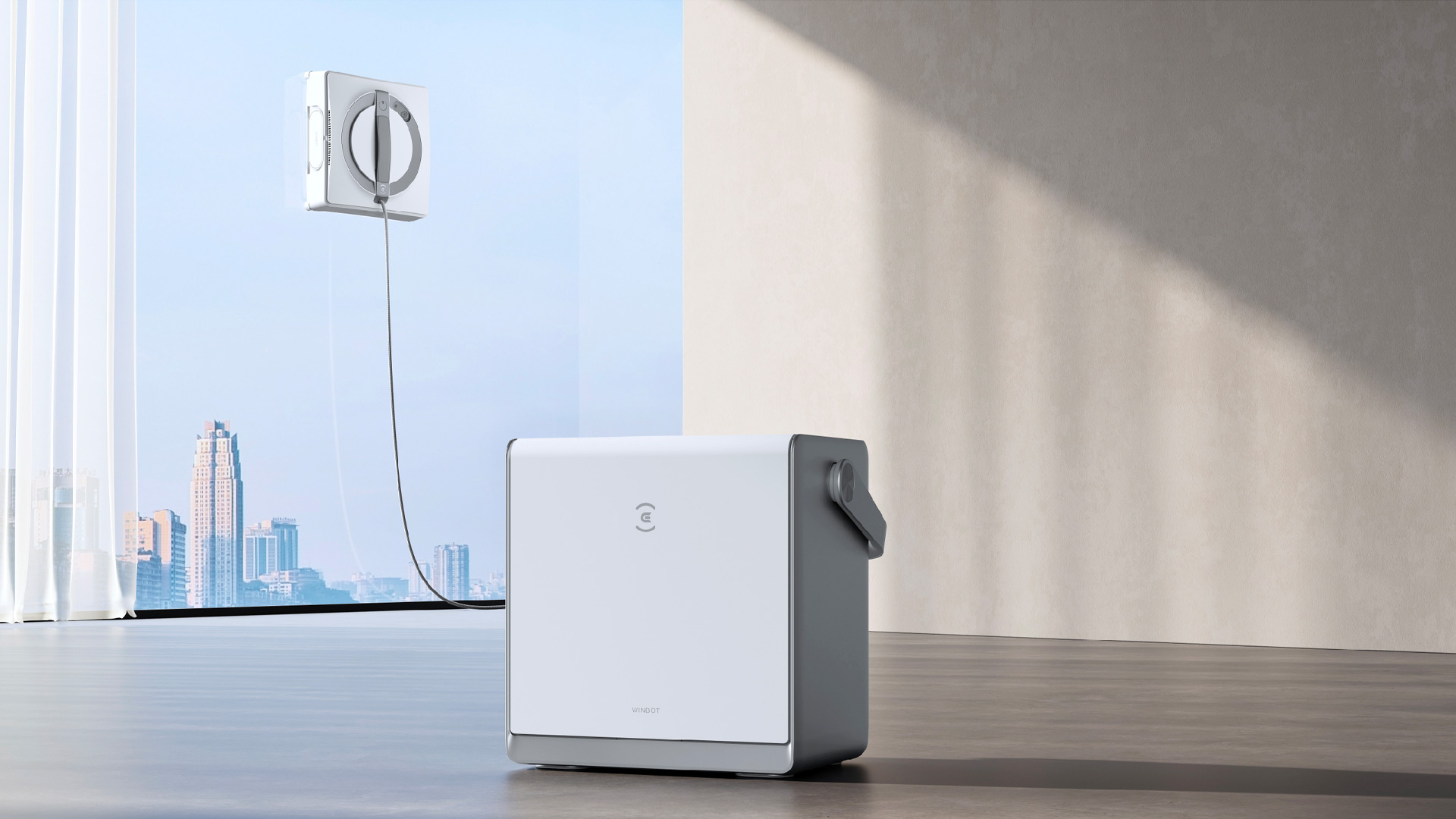 "Window Cleaning Robots" Are Now More Affordable, but Are They Worth It? Our Tech Expert's Verdict
"Window Cleaning Robots" Are Now More Affordable, but Are They Worth It? Our Tech Expert's VerdictYes, robots can semi-automate one of the most tedious household chores around, but there are drawbacks.
By Alan Martin Published
-
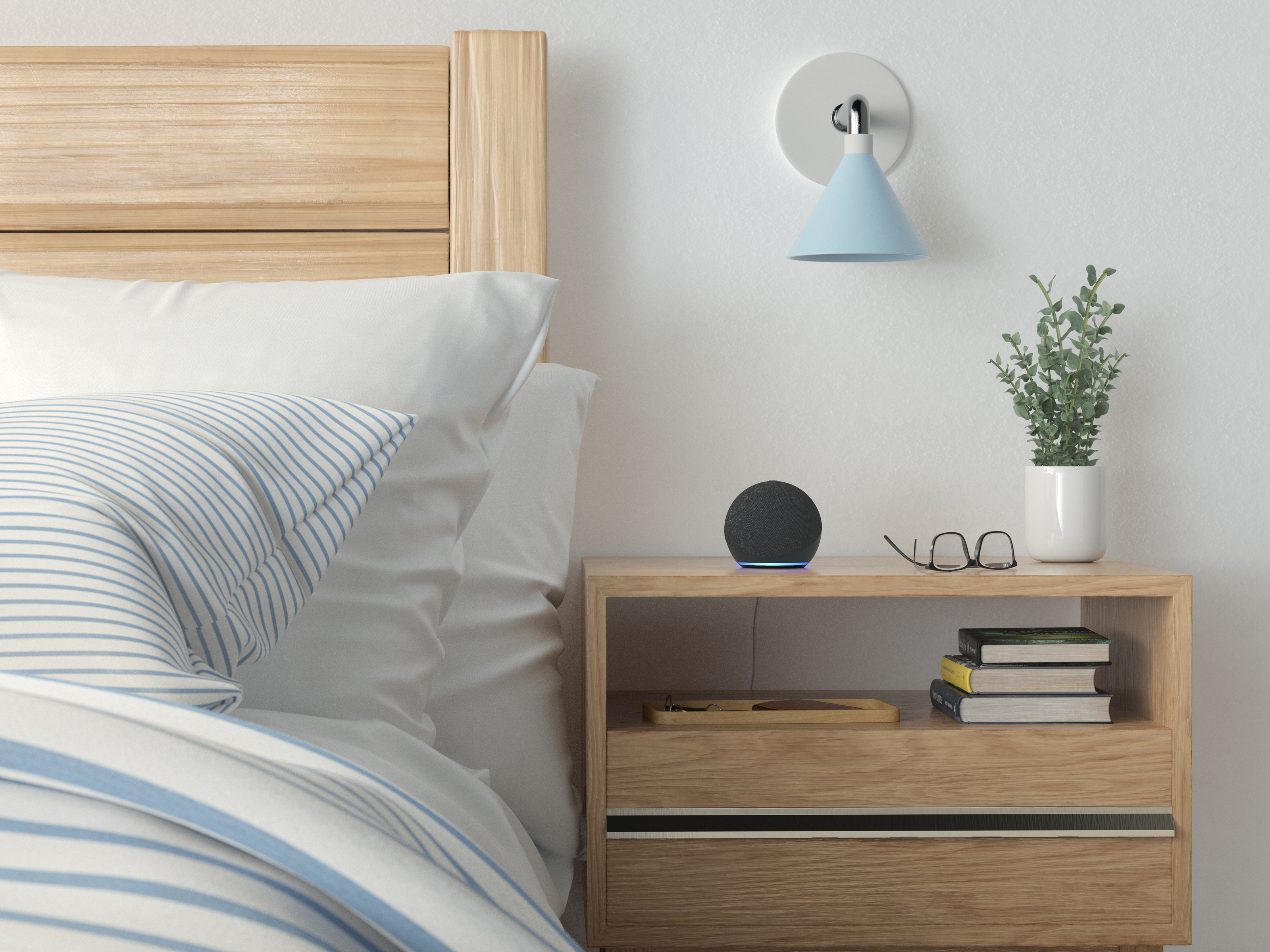 5 Clever Ways you can use Your Amazon Alexa Devices to Help you Sleep Better — 'They Revolutionize Your Night Time Routine!'
5 Clever Ways you can use Your Amazon Alexa Devices to Help you Sleep Better — 'They Revolutionize Your Night Time Routine!'If you don't have an Amazon Echo device in your bedroom yet, you'll definitely want to after learning about these genius functions
By Lilith Hudson Published
-
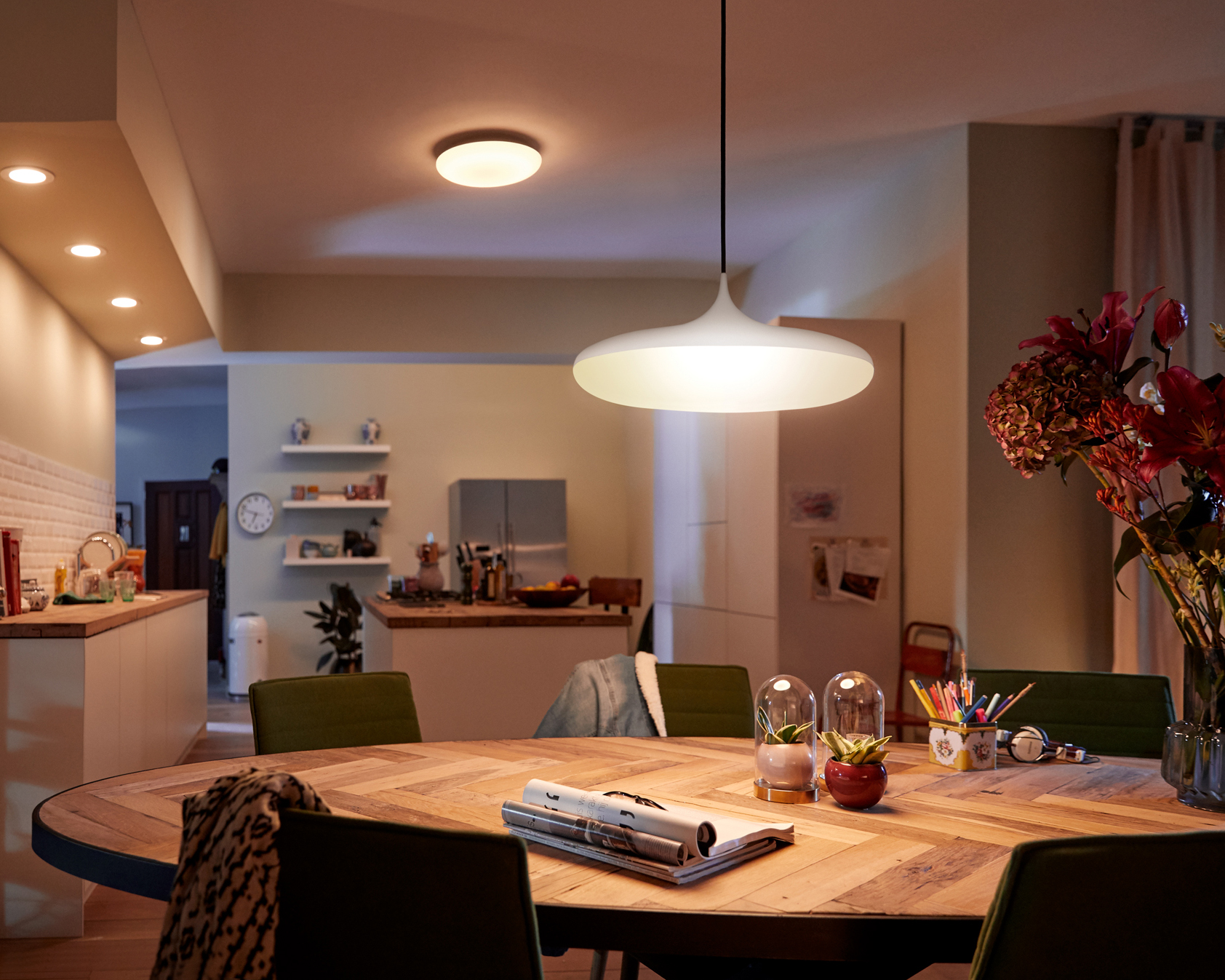 6 Resolutions to Make Your Smart Home Better in 2024 — This is How to Get More From Your Tech
6 Resolutions to Make Your Smart Home Better in 2024 — This is How to Get More From Your TechMake your smart home work better for you in the new year with these tips to get things firing on all cylinders
By Alan Martin Published
-
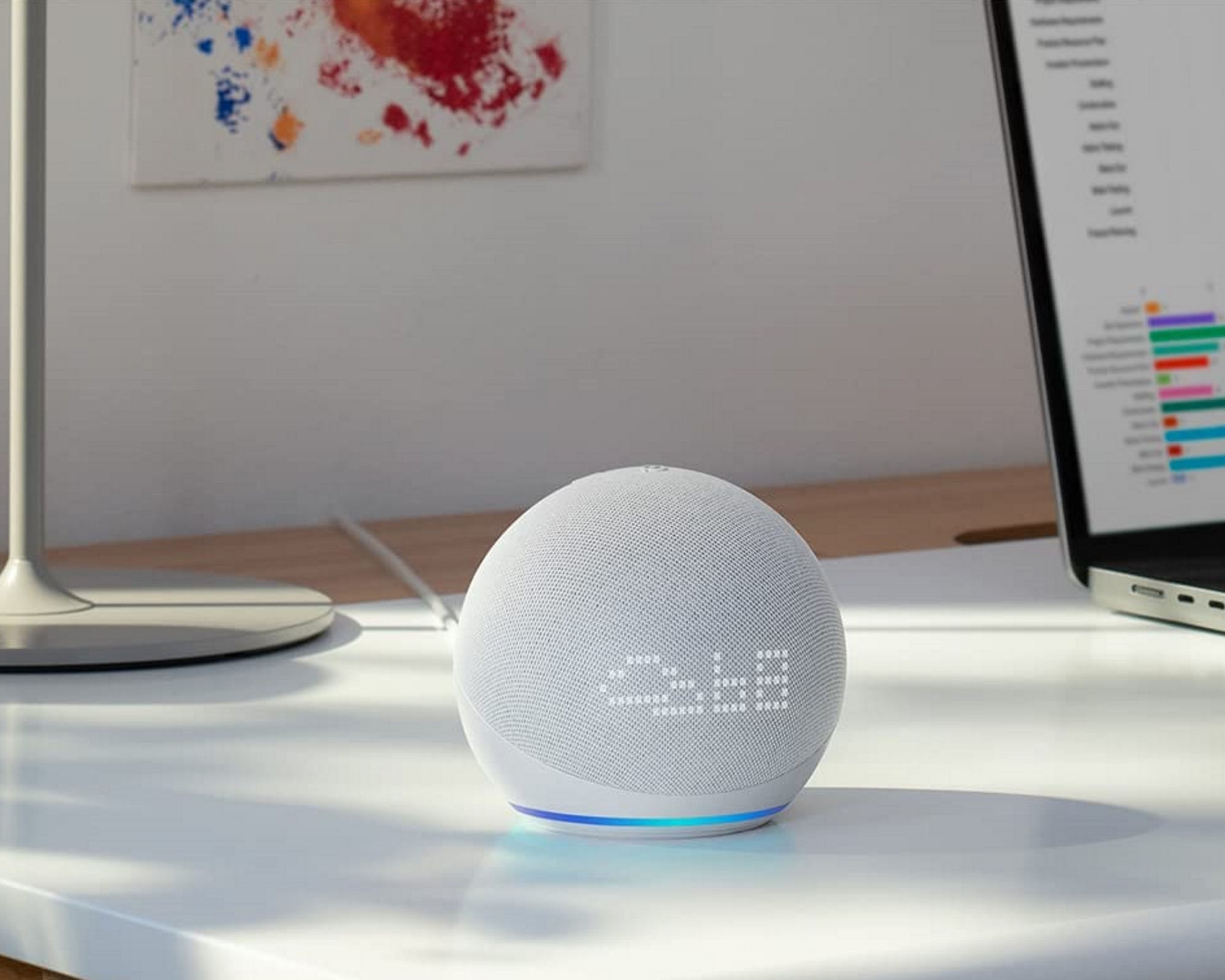 How to Stop Alexa Suggestions - It's so Easy to Turn Off Unwanted Advice From Your Smart Speaker
How to Stop Alexa Suggestions - It's so Easy to Turn Off Unwanted Advice From Your Smart SpeakerCut down on your Amazon Echo’s follow-up spam with this foolproof method.
By Alan Martin Published
-
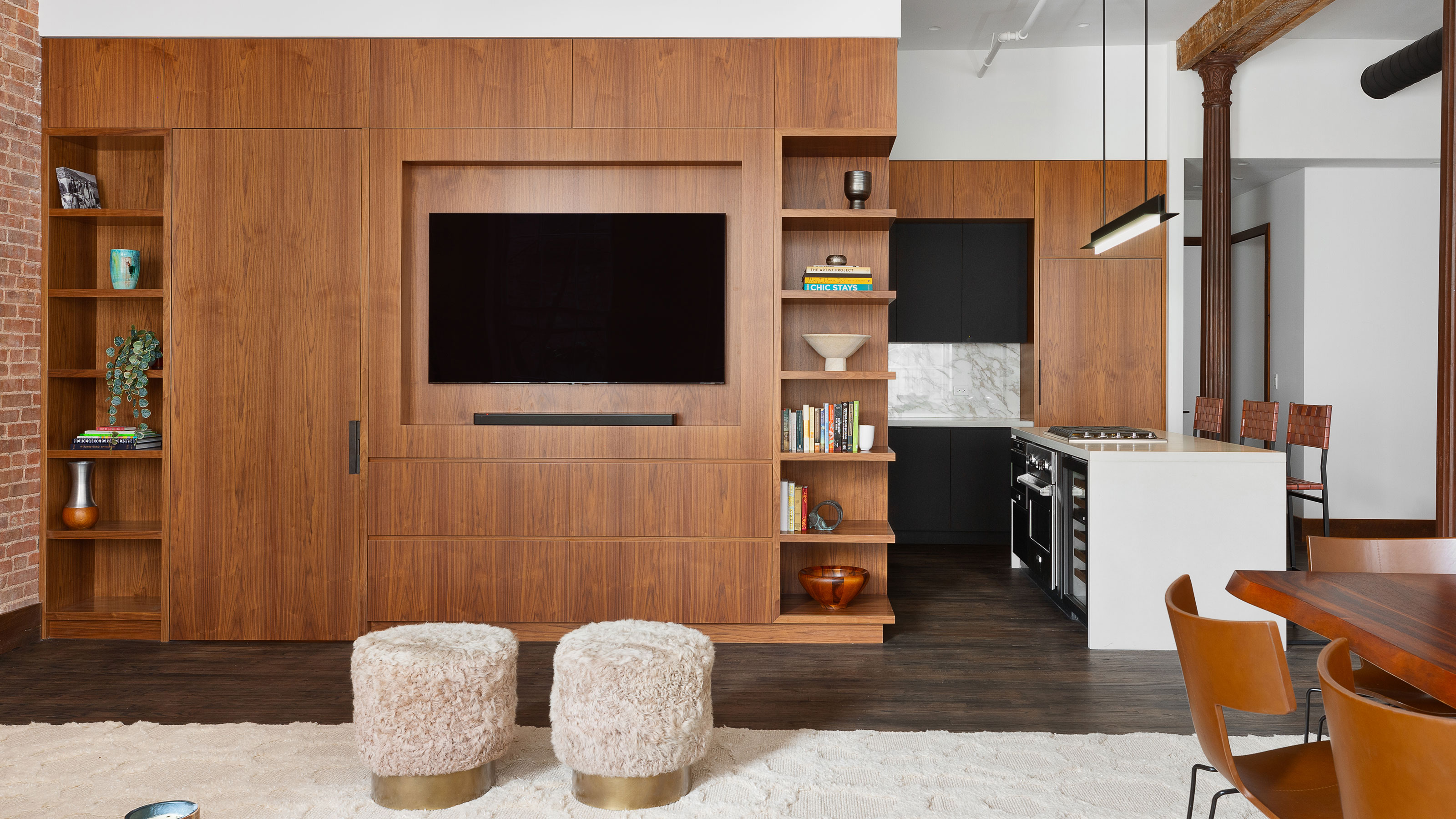 I lost my TV remote – how can I control my TV now?
I lost my TV remote – how can I control my TV now?There are plenty of options for people whose TV remotes have been lost or simply stopped working
By Alan Martin Published
-
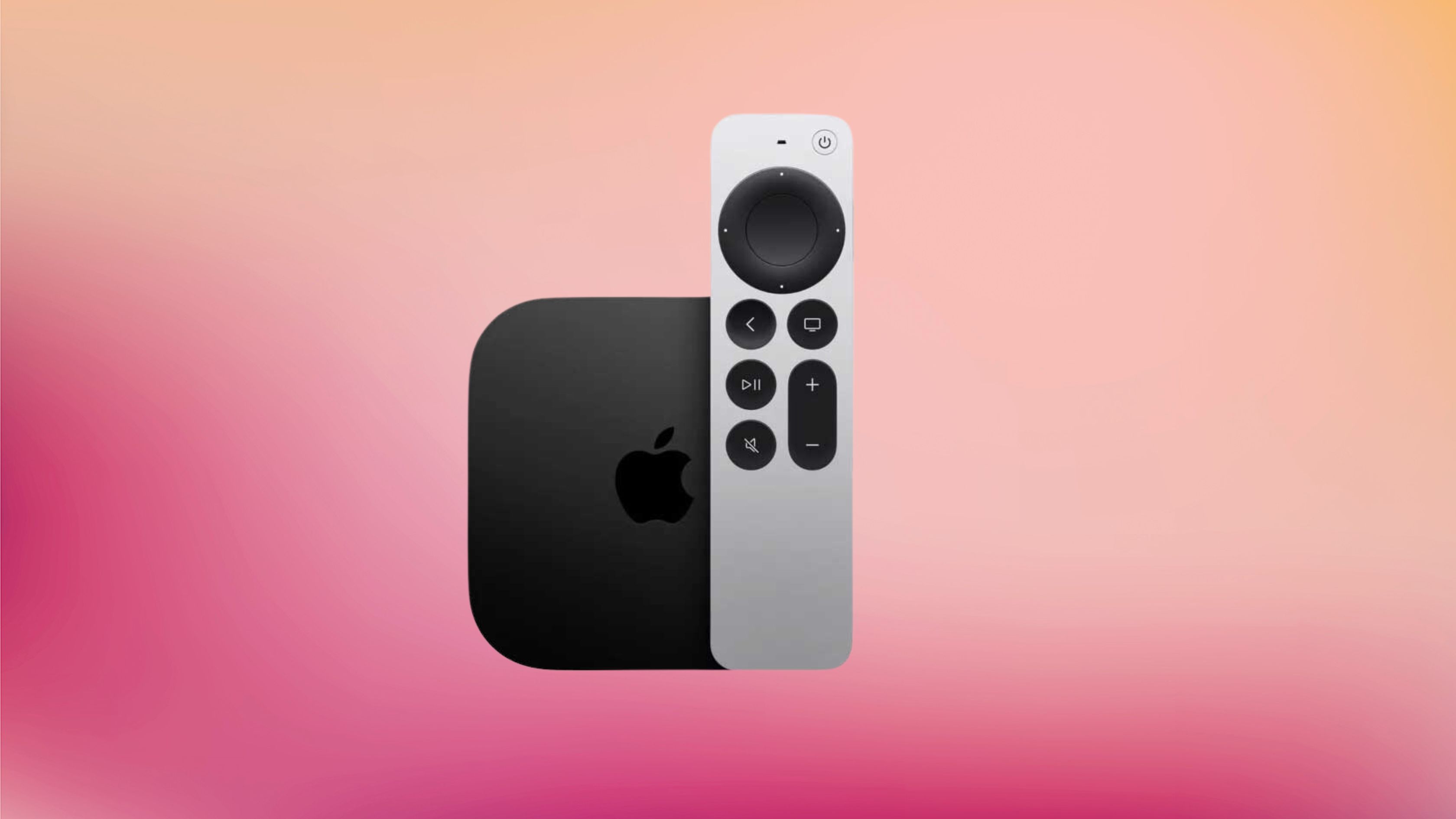 How to add Apple TV as a HomeKit home hub - and why it's a good idea for your smart home
How to add Apple TV as a HomeKit home hub - and why it's a good idea for your smart homeYour Apple TV box can be the center of your smart home. Here’s how to set it up as your HomeKit home hub
By Alan Martin Published
-
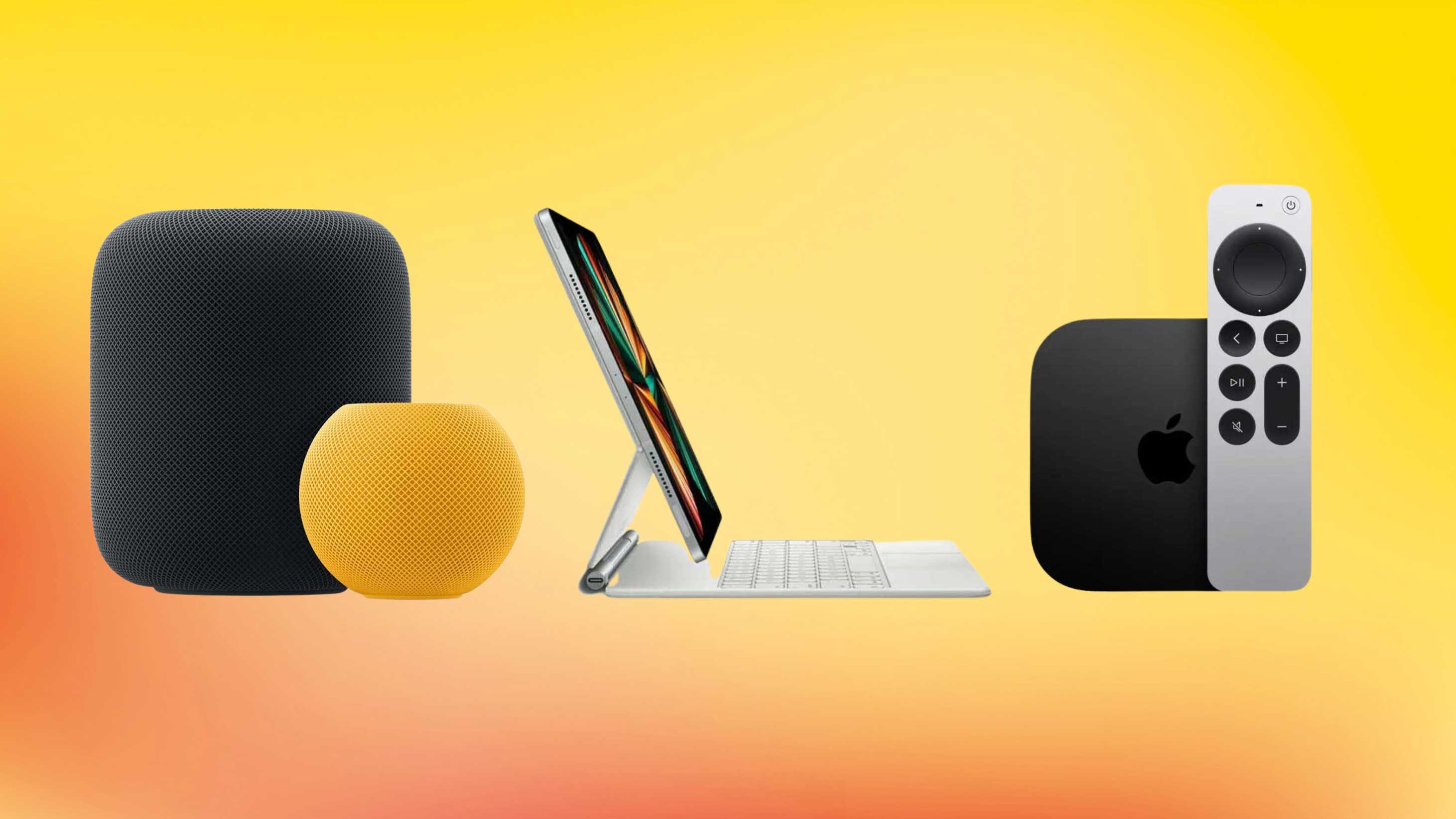 What are the options for an Apple HomeKit home hub? An expert's verdict on which is best
What are the options for an Apple HomeKit home hub? An expert's verdict on which is bestIf you want to set up an Apple HomeKit home hub, you have three options — but one has a big drawback
By Alan Martin Published